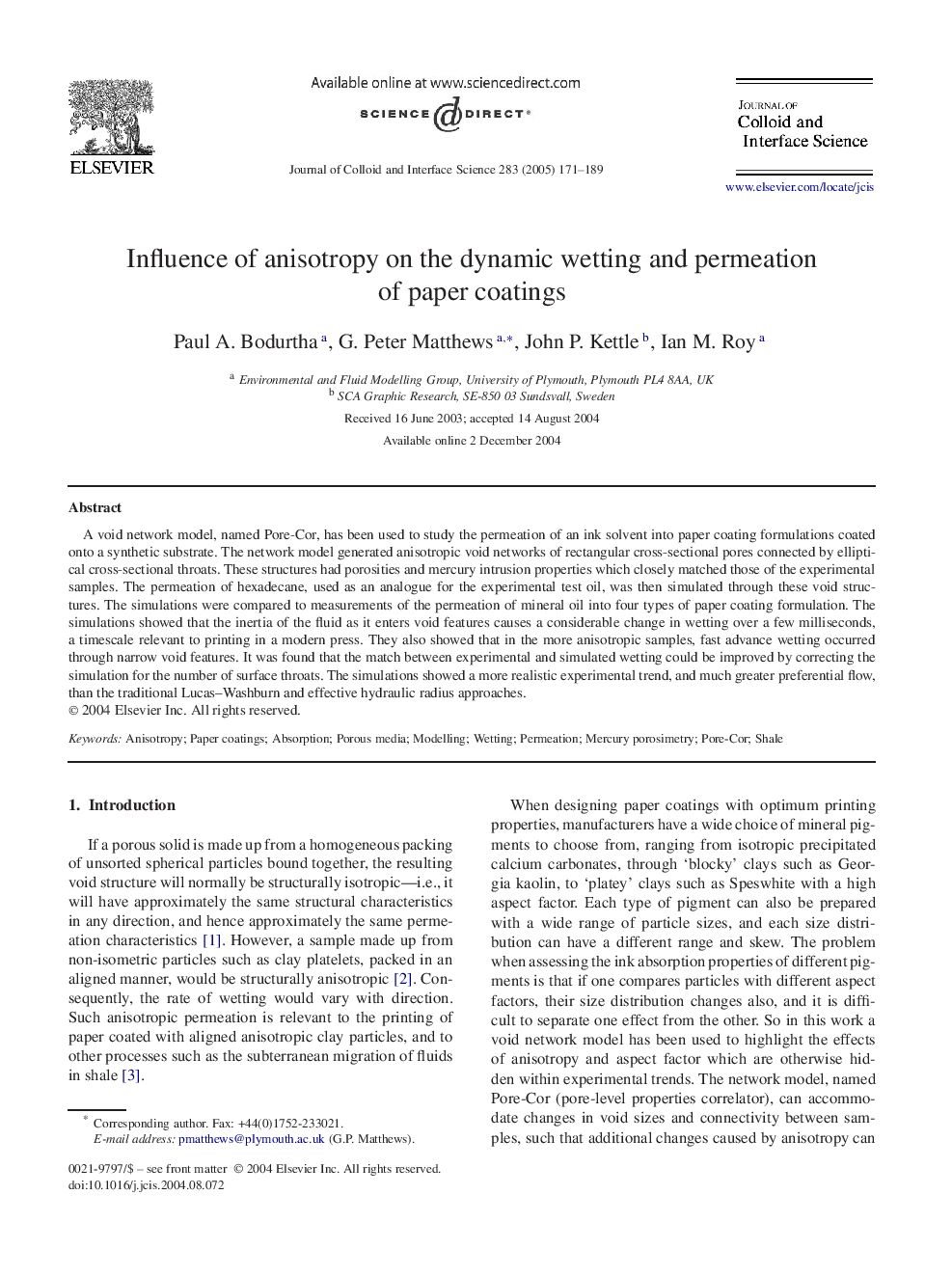| Article ID | Journal | Published Year | Pages | File Type |
|---|---|---|---|---|
| 10378471 | Journal of Colloid and Interface Science | 2005 | 19 Pages |
Abstract
A void network model, named Pore-Cor, has been used to study the permeation of an ink solvent into paper coating formulations coated onto a synthetic substrate. The network model generated anisotropic void networks of rectangular cross-sectional pores connected by elliptical cross-sectional throats. These structures had porosities and mercury intrusion properties which closely matched those of the experimental samples. The permeation of hexadecane, used as an analogue for the experimental test oil, was then simulated through these void structures. The simulations were compared to measurements of the permeation of mineral oil into four types of paper coating formulation. The simulations showed that the inertia of the fluid as it enters void features causes a considerable change in wetting over a few milliseconds, a timescale relevant to printing in a modern press. They also showed that in the more anisotropic samples, fast advance wetting occurred through narrow void features. It was found that the match between experimental and simulated wetting could be improved by correcting the simulation for the number of surface throats. The simulations showed a more realistic experimental trend, and much greater preferential flow, than the traditional Lucas-Washburn and effective hydraulic radius approaches.
Keywords
Related Topics
Physical Sciences and Engineering
Chemical Engineering
Colloid and Surface Chemistry
Authors
Paul A. Bodurtha, G. Peter Matthews, John P. Kettle, Ian M. Roy,
